For years, Google has included an extra search box within some search results, encouraging you to dig further and look only within a specific website. But now that sitelinks search box is going away because “usage has dropped.”
Technology
HONOR Magic V3 vs OnePlus Open
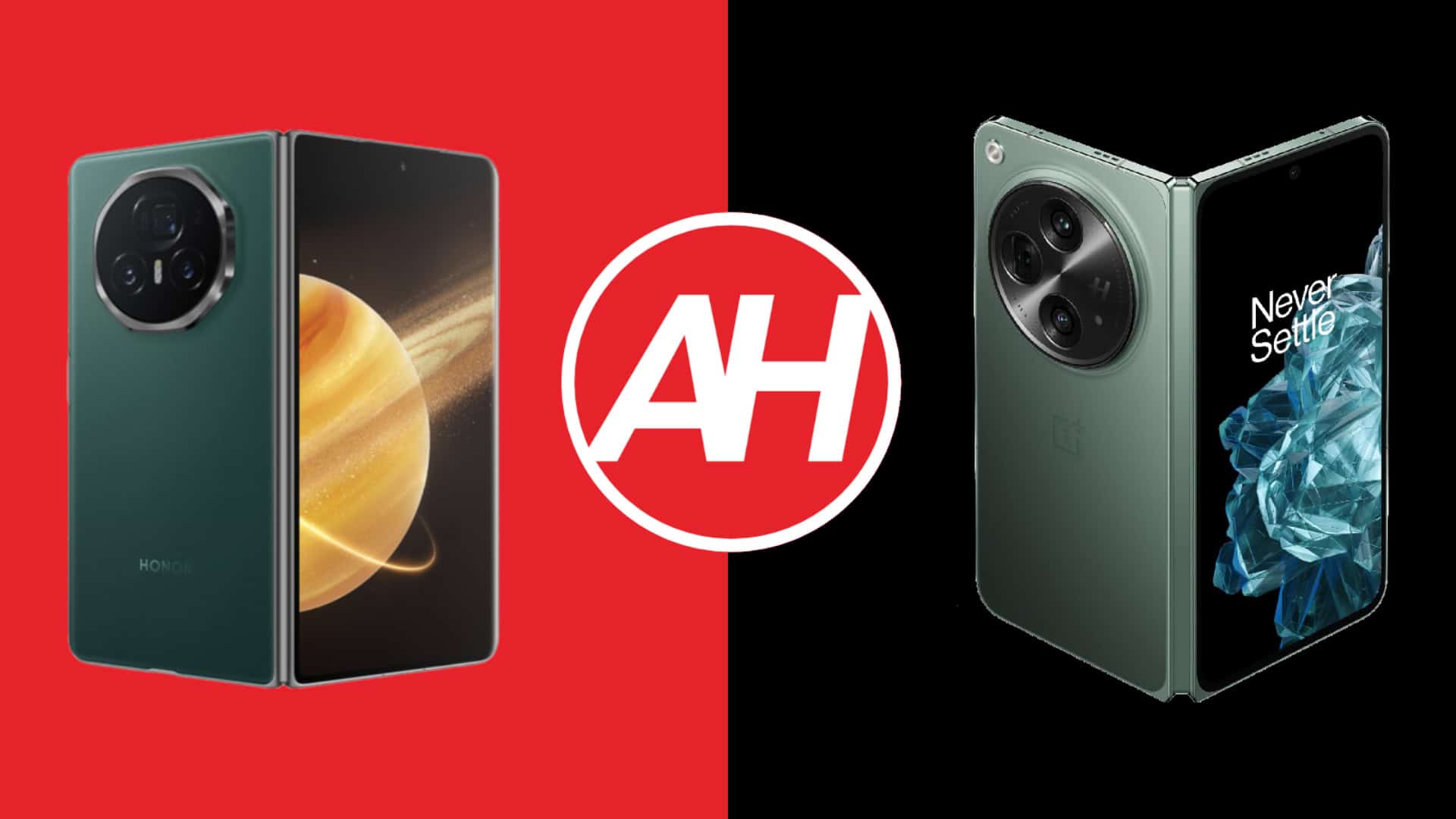
HONOR announced the world’s slimmest and lightest book-style foldable smartphone a couple of months ago, the HONOR Magic V3. That phone went global in September, and in this article, we’ll compare it with a device that is considered to be one of the best, if not the best foldable smartphones out there still. In this article, we’ll be comparing the HONOR Magic V3 vs OnePlus Open.
Both of these smartphones are truly compelling, but they’re also quite different. That goes for both their designs, their internals, and so on. As we usually do, we will first list the spec sheets of both smartphones. Following that, we will compare them across a number of categories, including design, display, performance, battery, cameras, and audio, With that being said, let’s get to it.
Specs
HONOR Magic V3 & OnePlus Open, respectively
– Screen size (main):
7.92-inch Foldable LTPO AMOLED (120Hz, HDR10+, Dolby Vision, 1,800 nits)
7.82-inch LTPO 3 AMOLED (120Hz, HDR10+, Dolby Vision, 2,800 nits)
– Screen Size (cover):
6.43-inch LTPO OLED (120Hz, 5,000 nits)
6.31-inch LTPO3 OLED (120Hz, 2,800 nits)
– Display resolution (main):
2156 x 2344
2268 x 2440
– Display resolution (cover):
2376 x 1060
2484 x 1116
– SoC:
Qualcomm Snapdragon 8 Gen 3
Qualcomm Snapdragon 8 Gen 2
– RAM:
12GB/16GB (LPDDR5X)
16GB (LPDDR5X)
– Storage:
256GB/512GB/1TB (UFS 4.0)
512GB (UFS 4.0)
– Rear cameras:
50MP (wide, f/1.6 aperture, 1/1.56-inch sensor size, OIS, PDAF), 40MP (ultrawide, f/2.2 aperture, 112-degree FoV), 50MP (periscope telephoto, 1/2.51-inch sensor size, OIS, 3.5x optical zoom)
48MP (wide, f/1.7 aperture, multi-directional PDAF, OIS), 48MP (ultrawide, 114-degree FoV), 64MP (periscope telephoto, 3x optical zoom, 6x “in-sensor” zoom, macro)
– Front cameras:
20MP (main display, f/2.2 aperture), 32MP (cover display, f/2.4 aperture)
20MP (main display, f/2.2 aperture), 32MP (cover display, f/2.4 aperture)
– Battery:
5,150mAh
4,805mAh
– Charging:
66W wired, 50W wireless, 5W reverse wired (charger included)
67W wired, 5W reverse wired (charger included)
– Dimensions (unfolded):
156.6 x 145.3 x 4.35 mm or 4.4 mm
153.4 x 143.1 x 5.8 mm
– Dimensions (folded):
156.6 x 74.0 x 9.2 mm or 9.3 mm
153.4 x 73.3 x 11.7 mm
– Weight:
226/230 grams
239/245 grams
– Connectivity:
5G, LTE, NFC, Wi-Fi, USB Type-C, Bluetooth 5.3
– Security:
Side-facing fingerprint scanner
– OS:
Android 14 with MagicOS 8.0.1
Android 13 with OxygenOS (upgradable)
– Price:
€1,999
$1,699
– Buy:
HONOR Magic V3 (HONOR)
OnePlus Open (Best Buy)
HONOR Magic V3 vs OnePlus Open: Design
Both of these phones are book-style foldables, but they do both look and feel different in the hand. The HONOR Magic V3 comes in both glass and vegan leather models, while the same goes for the OnePlus Open. Both phones also use aluminum and some other materials in their build, though. The back side of the OnePlus Open is flat, as are its sides. The same cannot be said for the HONOR Magic V3. Its back side does have a bit more of a curve towards the edges, while its sides are definitely not flat.
Both devices do have a flat cover display with a centered display camera hole on it. The bezels are quite thin on both of their displays, actually. You will also spot a display camera hole on their main displays, but they’re located in different spots. The HONOR Magic V3’s display camera hole is centered on the right side of the main display, so it’s about three-quarters to the right. On the OnePlus Open, it’s in the top-right corner.
There is a camera oreo located on the back of both phones. The one on the OnePlus Open does protrude a bit more, though, and it’s also physically larger. It is a good anchor for your finger when you’re holding the phone, though, so I definitely appreciated it being there during my use. The in-hand feel with these two phones is considerably different. Depending on the variant you get, they can be slippery.
The HONOR Magic V3 is the lighter device of the two, that much is obvious. It is also thinner, and it feels as much in the hand. The HONOR Magic V3 is IPX8 rated for water resistance. The OnePlus Open, on the flip side, comes with an IPX4 rating, which means it’s splash resistant.
HONOR Magic V3 vs OnePlus Open: Display
The main display on the HONOR Magic V3 is a 7.92-inch Foldable LTPO AMOLED panel with a resolution of 2156 x 2344. That panel can project up to 1 billion colors and supports HDR10+ content. It also supports Dolby Vision, and its refresh rate goes up to 120Hz. The peak brightness of this panel is 1,800 nits, and the screen-to-body ratio is at around 88%. The cover display measures 6.43 inches, and it’s an LTPO OLED display. It can project up to 1 billion colors, and Dolby Vision is supported. Its refresh rate goes up to 120Hz, while the peak brightness here is 5,000 nits, on paper. The resolution is 2376 x 1080.

The OnePlus Open, on the other hand, has a 7.82-inch Foldable LTPO3 Flexi-fluid main display. That is an AMOLED panel that can project up to 1 billion colors. Dolby Vision is supported too. The refresh rate here goes up to 120Hz, while the peak brightness is 2,800 nits. This display has a resolution of 2268 x 2440 and a screen-to-body ratio of 89%. The cover display measures 6.31 inches, and it’s an LTPO3 Super Fluid OLED display. Its resolution is 2484 x 1116, and it can project up to 1 billion colors. Dolby Vision is supported here too.
All four of these displays are very good. They do look a bit different out of the box, but both phones allow you to tweak their displays. They’re both more than sharp enough, and they’re well-optimized for a high refresh rate. The touch response is good, and the colors are vivid. The viewing angles are great on all displays. All four displays do get bright enough for all conditions, even though there is some difference in that regard too. The bottom line is, you’ll be happy with all of these displays. Both companies used quality panels and did a great job balancing them.
HONOR Magic V3 vs OnePlus Open: Performance
The Snapdragon 8 Gen 3 SoC fuels the HONOR Magic V3. That is Qualcomm’s 4nm processor, which is, at this moment in time, still the company’s flagship SoC. HONOR paired that with up to 16GB of LPDDR5X RAM, and UFS 4.0 flash storage. The OnePlus Open is fueled by the Snapdragon 8 Gen 2 processor, which is also a 4nm chip, but a year older than the Snapdragon 8 Gen 3. This phone comes with 16GB of LPDDR5X RAM and UFS 4.0 flash storage. Neither device offers storage expansion, by the way.
The performance that both phones offer is outstanding, though. You’ll be hard-pressed to notice the difference between these two chips in day-to-day use. Both phones offer snappy performance without any lag, even though their software implementations are notably different. They open apps really fast, and they’re also great for multitasking of any kind. Both companies also have rather snappy and well-executed animations thrown into the mix.
What about gaming? Well, despite the fact the OnePlus Open has an older chip, it still holds up in the gaming department, even when the most demanding games are concerned. Both of these phones can run anything the Google Play Store has to offer, and they can do a great job of running those games, even at the highest graphical settings. The bottom line is, the performance is not an issue on either of these two smartphones.
HONOR Magic V3 vs OnePlus Open: Battery
A 5,150mAh silicon-carbon battery sits inside the HONOR Magic V3. The OnePlus Open, on the flip side, offers a 4,805mAh battery pack. A larger battery doesn’t always mean better battery life, but in this case, it does. The HONOR Magic V3 did manage to offer better battery life for us, even though the OnePlus Open’s battery life is not bad at all. You can cross the 6-hour screen-on-time threshold on the OnePlus Open, and even go beyond that, depending on what you’re doing on the phone during your use.
The HONOR Magic V3, however, goes above and beyond that, usually. It can go over the 7-hour screen-on-time mark, once again, depending on your usage. The point is, it does offer better battery life, though the mileage may vary in your case. The battery life depends on a ton of factors, so… it will vary from one person to the next, of course. Both of these phones will offer more than enough juice for most people, but if you want a phone with better battery life, the HONOR Magic V3 is the one to get.
The HONOR Magic V3 is more versatile when it comes to charging. However, both phones charge similarly fast, at least in terms of wired charging, as that’s the only charging OnePlus’ foldable offers. The Magic V3 supports 66W wired, 50W wireless, and 5W reverse wired charging. The OnePlus Open only supports 67W wired charging. Both smartphones do come with a charger in the box.
HONOR Magic V3 vs OnePlus Open: Cameras
The two devices have considerably different camera hardware on the back. Still, both are quite compelling and amongst the best camera smartphones in the foldable world. The HONOR Magic V3 includes a 50-megapixel main camera (1/1.56-inch sensor), a 40-megapixel ultrawide unit (112-degree FoV), and a 50-megapixel periscope telephoto unit (1/2.51-inch sensor, 3.5x optical zoom). The OnePlus Open has a 48-megapixel main camera (1/1.43-inch sensor), a 48-megapixel ultrawide camera (114-degree FoV), and a 64-megapixel periscope telephoto unit (3x optical zoom, 1/2.0-inch sensor size).

Both devices are rather capable in the camera department, but the results are different. The HONOR Magic V3 offers well-saturated images, but they’re usually less contrasty than the shots from the OnePlus Open. We preferred the color science of the OnePlus Open most of the time. Their ultrawide cameras do a good job of keeping the color profile of the main cameras, while both telephoto cameras are quite capable. Both of them have a periscope telephoto camera, though the OnePlus Open has a larger camera sensor. Both cameras do a good job, but we preferred telephoto shots from the OnePlus Open, as it balanced them out a bit better.
What about low light? Well, both do a good job in such situations too, it’s also a matter of preference. The Magic V3 tends to brighten up such scenes more than the OnePlus Open, for better or worse. The styles are entirely different, but quite compelling on both sides. The Magic V3 is a major improvement over the Magic V2, that’s for sure. The HONOR Magic V2’s camera was not all that impressive.
Audio
You will find stereo speakers on both of these smartphones. The thing is, the volume that both sets of speakers provide is average at best. It’ll be enough for most people, but don’t expect them to be as loud as you may be used to. The sound quality output is good, though.
There is no audio jack on either one of these two phones. You can use their Type-C ports to hook up your wired headphones, though, if you want. Bluetooth 5.3 is supported on both smartphones.
Technology
Meta to use facial recognition to tackle celebrity scam ads


Meta has said it’s going to utilize facial recognition technology in a bid to crack down on celebrity scam ads that plague its Facebook and Instagram platforms.
The move comes three years after Meta removed facial recognition smarts from Facebook following a backlash against the technology. Meta will be hoping that the implementation of the system, and the reason for bringing it in, will be better received by its online communities this time around.
“Scammers often try to use images of public figures, such as content creators or celebrities, to bait people into engaging with ads that lead to scam websites, where they are asked to share personal information or send money,” Meta explained in a post announcing the move to reintroduce facial recognition technology.
Meta already has a system in place for detecting scam ads involving celebrities, but it’s now aiming to make it more robust. Moving forward, if it suspects an ad to be a potential scam and it contains the image of a public figure at risk of celeb-bait, it will deploy facial recognition technology to compare faces in the ad to the public figure’s Facebook and Instagram profile pictures. If it confirms a match and concludes that the ad is a scam, Meta will block it.
In a bid to steer clear of the same kind of criticisms that prompted Meta to ditch a form of facial recognition technology three years ago that involved automatic photo-tagging of Facebook users, the company said it will delete any facial data generated from ads for the one-time comparison, regardless of whether its system finds a match, adding that it won’t use the data for any other purpose.
The company said that early testing with a small group of celebrities and public figures shows promising results. Next, it will enroll a wider pool of celebrities that have been used in celeb-bait scams. Those selected will be notified, and they can opt out of the system at any time.
Regaining access to accounts
Meta said it’s also testing facial recognition technology as a way for people to verify their identity and regain access to Facebook and Instagram accounts if they forget their password, lose their device, or are tricked into giving their password to a scammer.
At the current time, owners of compromised accounts need to verify their identity to regain access by uploading an official ID or an official certificate that shows their name.
But Meta said it’s now testing “video selfies” as a way for people to verify their identity and regain access to their account.
“The user will upload a video selfie and we’ll use facial recognition technology to compare the selfie to the profile pictures on the account they’re trying to access,” the company explained, adding that the system is “similar to identity verification tools you might already use to unlock your phone or access other apps.”
Uploaded video selfies will be encrypted and stored securely and will never appear on any Meta platform. The video will also be deleted immediately by Meta once it’s been used to verify a user’s identity.
“Video selfie verification expands on the options for people to regain account access, only takes a minute to complete and is the easiest way for people to verify their identity,” Meta said. “While we know hackers will keep trying to exploit account recovery tools, this verification method will ultimately be harder for hackers to abuse than traditional document-based identity verification.”
Technology
Gemini may soon be able to manage calls on locked devices
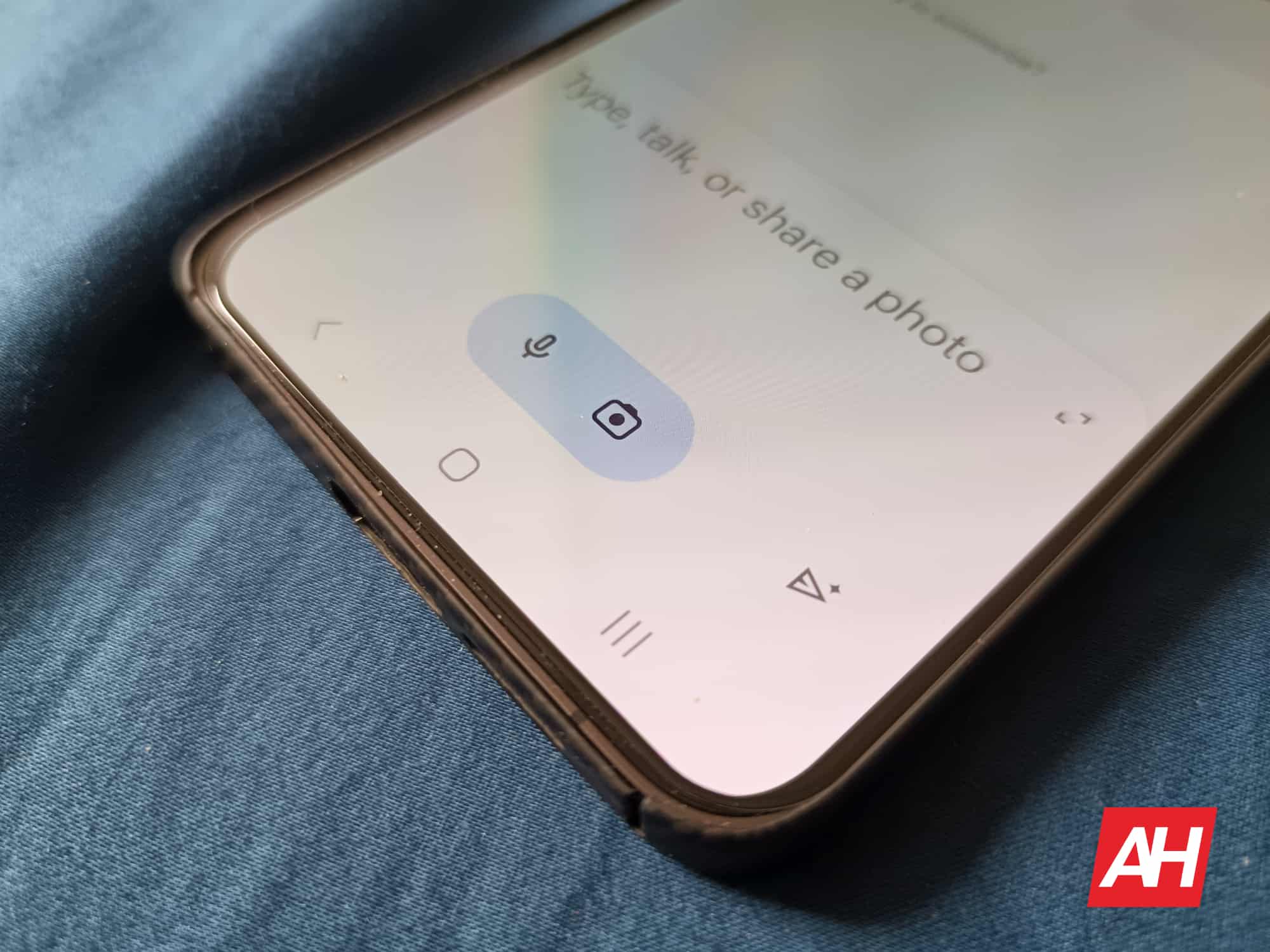
Google continues to work on making Gemini the ultimate AI-powered assistant for mobile devices. Lately, the service has been gaining features that were previously only available on the classic Google Assistant. New findings suggest that Gemini may soon receive the ability to manage calls and messages on locked devices.
Both Gemini and Google Assistant are capable of making calls and sending text messages via voice commands. However, currently, only Google Assistant can do so on phones with the screen locked. A new Gemini option that enables such actions from the lock screen could soon change that.
You could then make calls and send messages with Gemini from locked devices
Gemini is already capable of offering responses to requests via voice commands with the screen locked, but the call and message management function is still missing. That is one of the features that keeps Google Assistant “alive.” However, Android Authority has enabled a switch to trigger calls and messages from Gemini on locked devices in the latest Google app beta (v15.42.30.28.arm64).

You can access the switch from the same section where you grant Gemini permission to perform other actions while the screen is locked. Still, the feature will require you to unlock the device under certain conditions. “Gemini will still ask you to unlock when a response contains personal content, such as your Gmail messages, from apps you use,” the option says.
New minimalist floating overlay and extension categories
The source has identified a few additional potential changes for Gemini. First, it seems that Google wants to make the assistant’s floating overlay much more minimalistic. To achieve this, they are significantly reducing the size of the floating overlay, a move that makes sense as it allows for a larger percentage of the background UI to remain visible. The floating overlay will expand according to the number of words your prompt contains.

Additionally, Google is rearranging the Gemini extensions into different categories. Initially, the few Gemini extensions available made it possible to have them all in one list, in no apparent order. However, as the service is receiving more and more extensions, it is more convenient to include an organizational system. This will help you find current and future extensions more easily. There are categories like “communication,” “device control,” “travel,” “media,” and “productivity.”
There are no details on when Google might push these new features to Gemini. It’s even possible that we will never see some of the spotted changes implemented.
Technology
Nintendo Alarmo review: Charming, yet frustrating
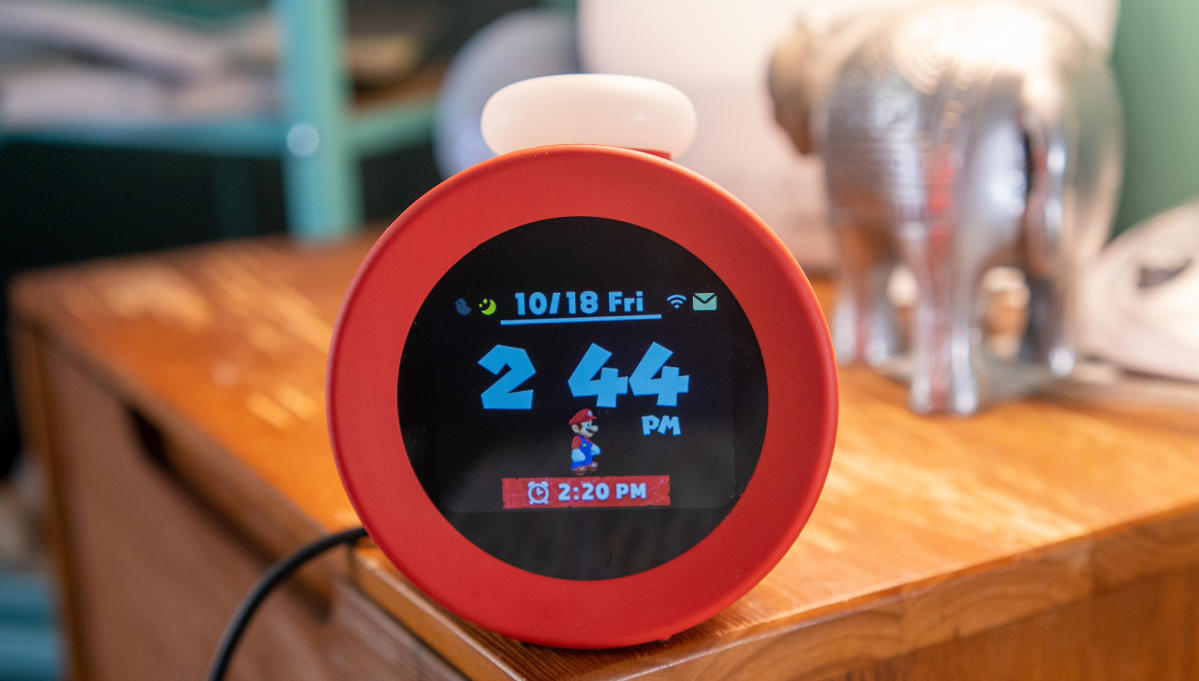
Alarmo is the quintessential Nintendo product: It’s a fun and quirky spin on a bedside alarm clock (with a motion sensor!) that mines your love for everything Nintendo. It’s a $100 device entirely meant to surprise and delight you. But there are also usability issues that make me think the company’s engineers haven’t encountered any modern gadgets over the past decade (which is how long they’ve been developing Alarmo).
Here’s an example: There’s no easy way to input your Wi-Fi password if you ever want to download new themes. Instead you have to patiently spin its bulbous top button until you land on the character you need, then press it down like Mario squashing a Goomba. That may not sound like much of an issue, especially since you may only need to do it once, but it’s needlessly frustrating if you have a complex password with multiple letter cases, numbers and symbols. My password is all lowercase letters, thankfully, but it still took me three minutes to punch it in. Instead of getting some rest, it just made me want to throw Alarmo out of my window(-o).
Alarmo brings a dose of Nintendo fun into your bedroom, with sleep noises and motion sensing alarms featuring classic Nintendo characters. It’s expensive, though, and its sleep tracking is mostly useless.
- Adorable design
- Fun alarm options
- Helpful sleep sounds
- Motion sensing makes getting up fun
- Expensive
- Limited selection of themes
- Difficult Wi-Fi setup
- No companion app
- Useless sleep tracking
But then I had it lull me to sleep with the sounds of The Legend of Zelda: Breath of the Wild. At 6:30am, rascally Koroks roused me from my slumber and made their telltale noises as I shuffled around my bed. And once I got up, they performed Hestu’s traditional celebratory dance, much to the chagrin of my sleeping cats. All was forgiven.
So, what is Alarmo?
Nobody actually needs Alarmo (officially dubbed the “Nintendo Sound Clock: Alarmo”), but its appeal to Nintendo fans is obvious. It wouldn’t be out of place as a prop in Mario Odyssey, with its cartoonishly round, red case, nubby feet and prominent control knob (which glows, naturally). Its 2.8-inch screen is surprisingly small and square, not round like some of Nintendo’s promotional videos make it seem, and its speakers are loud enough to fill even large bedrooms with undistorted nostalgia bombs. Controlling it is relatively simple: Twist and push the knob, or use the back button to return to the previous screen. You can also view notifications, like updates on your sleep cycle, by tapping the message button.
I’ll admit my bias: I was practically raised on Nintendo consoles, so it’s almost as if Alarmo was built specifically for someone like me. I don’t really mind that Alarmo’s large red case doesn’t really fit with the clean aesthetic of my bedroom. But I’m sure it’ll be a tougher sell if you’re sharing a bed with someone less Nintendo-pilled. (More on that below.)
While Alarmo is mostly pitched as an alarm clock with Nintendo themes — at launch, there are sounds and characters from Mario Odyssey, The Legend of Zelda: Breath of the Wild, Splatoon 3, Pikmin 4 and (strangely enough) Ring Fit Adventure — it also adds a bit of Nintendo charm throughout your day. Alarmo can produce hourly chimes, and also play “Sleepy Sounds” related to your theme. For Breath of the Wild, that includes the crackling of a campfire, nocturnal animals and delightful snippets of the game’s score. (I could be mistaken, but it also sounds like there’s a bit of score from the moments before a Blood Moon arrives. I hope Nintendo snips that out eventually — nobody wants to go to bed dreading a Blood Moon.)
Does Alarmo actually work?
As an alarm clock, Alarmo gets the job done. It managed to wake me up successfully every day over the past week, and it did so far less jarringly than my iPhone’s blaring speaker. It simply felt pleasant to be welcomed into the world by Koroks and Mario. Every toss and turn triggered more sound effects, which slowly nudged me awake. In its default “Steady Mode,” Alarmo also gets progressively louder the longer you stay in bed, and more nefarious characters like Bowser might make an appearance. But if you just want things to stay super chill, there’s also a “Gentle Mode” that doesn’t escalate noise. Alarmo also responds to the mere act of getting out of bed with a huge celebration — honestly, it’s about time someone recognized the effort.
While Nintendo provides some rudimentary sleep statistics, based on Alarmo’s motion sensing and your alarm settings, they’re mostly useless. I think my numbers may have been skewed by my three cats, who sleep on my bed for most of the day, and may be triggering the device’s motion sensor. I certainly wish I could have slept for the 17 hours it recorded at one point. (I’m lucky to get six hours these days.) Even if Alarmo’s sleep-tracking was functional, there’s not much you can do with the data, since it’s all stuck on the device. That’s one of many areas where having a separate app would have been useful. (You’d think it would work with Pokemon Sleep, but no!)
Another issue? Alarmo’s unique motion sensing technology is only made for a single sleeper (just like Google’s latest Nest Hub). If you’re in bed beside a partner or unruly kids, Nintendo recommends switching to “Button mode,” where you have to tap the top knob to disable the alarm. At least it’s easy to change Alarmo’s modes, and if you leave the sensor on by mistake, it’s not the end of the world when it actually goes off. You’ll hear a bit more noise than usual, but you can still hit the top button to quiet things down.
Setting up Alarmo
There are only three things inside Alarmo’s box: The device itself, a USB Type A to USB-C cable and a small instruction booklet. Notably missing is a USB power adapter. That’s something we’ve grown used to with smartphones and some of Nintendo’s handhelds, but not bundling one is still a pain for anyone who doesn’t have spare power adapters. I can just imagine a parent trying to set up Alarmo for their eager child, only to be delayed for a day because they need to run out and buy a separate adapter. That’s not surprising and delightful, Nintendo. It’s just annoying.
The actual onboarding process is pretty straightforward. Once you plug it in, Alarmo teaches you how to use its top dial and button, and explains how the back button works. You can also rotate the dial to adjust its volume and the device directs you to wave your hand in front of it to test its motion sensing. You have to direct Alarmo’s orientation towards your bed and make sure it has a clear view of your sleeping area at the edge of a nightstand or table. The motion sensing won’t work if it’s too high.
To finish off the setup process, you have to lay down and make sure Alarmo can actually detect your movement. That worked without much fuss on my end, but when it asked me to sit up and lean in a specific direction, there was a delay of a few minutes before it noticed correctly when I was leaning to the right.
At the very least, Nintendo didn’t force me to connect to Wi-Fi during the initial setup. Instead, that’s triggered when you choose to update its themes, and the entire process required is just frustrating, as I described above. Now, it’s not as if Nintendo hasn’t learned to use QR codes via websites and apps to simplify logins. You also have to sign in to your Nintendo account once Alarmo is connected to Wi-Fi, but I was thankfully able to use a QR code to do so over my iPhone.
I suppose Nintendo wanted to have a simpler onboarding experience for Alarmo, one that didn’t require external authentication or an additional app. But that desire for simplicity still leads to needless frustration.
It would be nice to see a wider selection of themes, as well. I’m not sure many Nintendo fans are clamoring to re-experience the characters and music from Ring Fit Adventure, after all. Where’s Kirby? Where’s Mario Kart? If there’s room for Splatoon and Pikmin, there should be room for Nintendo’s more iconic franchises.
Is Alarmo worth it?
I’m no stranger to tech-infused alarms. My nightstand is already overloaded with gadgets, including an Amazon Echo Dot (which I use to play radio stations), an older Phillips SmartSleep rise light, a Homedics white noise machine, my iPhone 15 Pro Max (charging on a Belkin MagSafe stand) and a Hatch Baby video monitor. As much as I appreciated having bits of Nintendo magic in my bedroom, I didn’t love it enough to replace any of the devices I’m already using.
But my daughter Sophia is another story. We’ve played through most of Tears of the Kingdom together, and I’ve done my best to teach her in the ways of Nintendo. (I’ll save the issues with the company’s extreme litigiousness for when she’s older.) She’s eager to use Alarmo to wake up on her own, without my early-morning badgering. She also loves Koroks, so I’m pretty sure the Zelda theme will be permanently enabled. At least, until Kirby arrives.
I’m not going to try and justify the need for a $100 alarm clock. If you’re a big enough Nintendo fan, you’ve probably already locked in your pre-order. And there’s a chance it’ll become more compelling over time, if Nintendo manages to add themes and drive down the price. For now, though, it’s a reminder that Nintendo can do more than just churn out consoles and games. There’s still room for the company to take weird swings, it’s just too bad Alarmo is expensive and imperfect.
Technology
Xsolla announces certified parental controls, a boom in Web Shop revenue and expansion in SE Asia

Presented by Xsolla
During the latest GamesBeat Live session, Dean Takahashi, lead writer for GamesBeat, sat down with Berkley Egenes, chief marketing and growth officer at Xsolla, to dig into the latest Xsolla news. They spoke about the company’s newly launched Parental Controls solution which is now certified with the Children’s Online Privacy Protection Rule (COPPA) and GDPR-K and designed to keep gaming safe for young players while ensuring regulatory compliance. They also explored the latest in Xsolla’s Web Shop solutions, which have powered the successful launch of over 400 web shops. Finally, they touched on the recent expansion of payment methods in Cambodia and Indonesia.
Addressing compliance and safety challenges
Direct-to-consumer strategies like web shops are becoming more common – and so are compliance and safety challenges. Breaking free of traditional platforms brings huge opportunities, but also requires developers to handle the complexity of regulatory demands. Younger players are especially vulnerable to the temptation of easy microtransactions and excessive spending, Egenes says. To address these challenges, Xsolla partnered with PRIVO last year to develop a robust suite of Parental Control tools.
“As a parent myself, it’s a super important initiative that we all need to address together within the industry as developers shift to become more direct-to-consumer focused,” he explains. “These compliance standards don’t just help parents manage that gaming experience and ensure that the developers provide a great experience, but meet those global standards and requirements that are needed in every country, in every region, that they want to distribute and sell in, and ultimately offer a great user experience and great gameplay.”
New Xsolla Parental Controls tools include age gating to protect minors from unauthorized transactions; guardian consent and real-time notifications and approval; a comprehensive transaction history; and spending limits. These tools are seamlessly integrated into the Payments dashboard, so developers can easily manage their compliance standards along with the rest of their web shop tools and services.
The new features will be demonstrated at upcoming game conferences to showcase all the ways these features solve key challenges – especially those that are often overlooked during the course of game development. That includes the need to ensure you have compliance measures in place for all player age groups, even if your game is specifically targeted toward adults, because younger players are undoubtedly playing your game too.
Xsolla Web Shop continues to gain traction
“We’ve been doing Web Shops for over three years, and we continuously upgrade our solution, our offering because of what we hear from our developer partners,” Egenes says. “Listening, getting into the room, with a lot of whiteboard conversations, we’ve designed a solution that meets the needs of any developer, no matter how big or small, wherever they’re located, to provide that quick setup and fully customized web shop.”
With Instant Web Shop, developers can quickly set up their online one-stop-shop for players, including features like personalization, promotions to enhance user engagement and revenue, and deep linking.
With LiveOps tools, developers can dig into A/B testing, and launch player favorites like featured offers, first-purchase offers, secret-shop promotions, coupons, promo codes and both time-limited and number-limited offers to help user engagement boom, facilitate the transition of players from the game to the web and back again, all with the goal of maximizing revenue streams. To cut costs without cutting quality, the low-code Xsolla Backend is an accessible, scalable way to build multi-player, cross-platform games faster and for less.
“Many of our partners have generated significant profits for their game that they’ll be able to reinvest into the game, additional patch updates or part two of their game, but then also able to apply that to the rest of their business for their mobile games,” he adds. “We’re seeing folks like our partners over at Tilting Point say that over 50% of their business comes from their Warhammer web shop.”
Xsolla is also seeing conversion rates skyrocket for customers offering these seamless player experiences. Because it’s so easy to log in and make repeat purchases, players are motivated to keep coming back for more. It’s easy for developers to keep store offerings fresh, and in return, players keep buying.
Opening up the Southeast Asia market
To help developers expand their reach around the world, Xsolla has turned its attention to the Southeast Asia market, including Cambodia and Indonesia, adding nearly 60 new payment methods to the 700-plus already in its roster.
“Some people may call it an emerging market. We call it an important market for us in engagement from the player perspective,” Egenes says. “We’re having more developers coming to us saying they want to engage and have players purchase their games from those countries, but be able to pay in their method of choice — covering over 90% of the payments market in each country we operate in.”
In Cambodia, the company has introduced eight new payment methods, such as internet banking options and digital wallets, covering up to 90% of the payments market and enabling game developers to reach nearly 2 million gamers in Cambodia.
In Indonesia, approximately 80% of consumers are unbanked or underbanked, and alternative payment methods (APMs) are the most preferred option. By integrating these APMs, such as e-wallets, bank transfers, cards and cash, as well as popular payment platforms, Xsolla covers up to 90% of the market.
“If you simplify the transaction process, then it removes the barriers, decreases cart abandonment and allows developers to reach more of those players and drive continuous growth in many of these vibrant markets around the world,” Egenes says.
Sponsored articles are content produced by a company that is either paying for the post or has a business relationship with VentureBeat, and they’re always clearly marked. For more information, contact sales@venturebeat.com.
Technology
India’s Neysa bags $30M to compete with global AI hyperscalers

Even though India isn’t at the forefront of the global AI innovation battle, demand for AI in the country is growing as businesses seek efficiencies and tech companies promote AI developments as a cure-all. The South Asian nation is projected to have an AI market touching $17 billion by 2027, according to a joint report by the IT industry body Nasscom and consulting firm BCG.
Neysa, an Indian startup led by seasoned tech entrepreneur Sharad Sanghi, aims to leverage this growth opportunity by offering its AI solutions to local and multinational businesses in the country.
The Mumbai-based startup provides AI and machine learning infrastructure and platform as a service to enterprise customers based on their requirements. It also includes dedicated machine learning operations and infrastructure consulting teams to help customers find the relevant size for their infrastructure, and to fine-tune or customize the models they choose.
Before founding Neysa with his former colleague Anindya Das in 2023, Sanghi spent over 27 years at his previous venture and data center provider, Netmagic, which Japan’s NTT Data acquired in 2016. He told TechCrunch that he intended to focus on cloud infrastructure and AI in 2022 but was unable to do so. He resigned as the managing director and CEO of Netmagic in June 2023 to start fresh with Neysa.
“I started at Neysa with a view of providing infrastructure as a service, platform as a service, inference as a service, the services layer around ML, as well as the platforms that we need for developers,” he said in an interview.

Neysa initially started as an infrastructure service provider and launched its flagship platform, Velocis, in July to provide on-demand access to computing infrastructure. However, it plans to expand the product lineup by launching its developer platform and inference-as-a-service before the year-end. The startup is also working on developing an “observability for better management” of its infrastructure and securing AI workloads, Sanghi said.
With its entire suite of offerings getting ready, Neysa is looking to compete with global hyperscalers, including the typical cloud service providers such as AWS, Google Cloud Platform, and Microsoft Azure, as well as the new-age contenders like CoreWeave and Lambda Labs. Sanghi asserted that the startup differentiates from the existing players by offering “flexibility” in its models.
“We can offer both public cloud and private clusters. It’s also the open-source nature of our offering. All our platforms are built on open-source platforms… so there’s no lock-in for clients,” he stated.
The startup’s consultation service also aims to attract local businesses, which often find it challenging to get the appropriate infrastructure without spending thousands of dollars.
“Very often, clients come to us and say that they want so many GPUs… and when we really look at the requirement, they don’t need half the amount they had asked,” Sanghi said.
Neysa has raised $30 million in an all-equity Series A round co-led by its existing investors NTTVC, Z47 (formerly called Matrix Partners India), and Nexus Venture Partners. This follows up the startup’s $20 million seed round earlier this year.
The fresh funding, Sanghi said, will augment Neysa’s infrastructure, enhance its R&D, and broaden go-to-market. The funds will also set the base for the startup to launch its integrated Gen AI acceleration cloud service.
The startup currently has a headcount of 55 people, which it will grow by adding more engineers and staff to expand direct and indirect sales.
Neysa currently has around 12 paying customers and runs about six large proof-of-concepts. As much as 70 percent of its entire customer base has opted for the private cluster, while the remaining 30 percent is on a public cloud, Sanghi said.
While Sanghi didn’t disclose the names of Neysa’s customers, he said the startup caters to broadly three categories: research institutes, AI-native startups, and enterprise customers, initially in the banking, manufacturing, and media sectors.
Neysa’s current customer base is in India, though Sanghi said the startup does plan to enter global markets with its next round of funding — talks for which have already started, and it is expected to close in the next six to nine months.
He did not reveal the exact amount Neysa seeks to raise in its next round, though he stated that it would be “in an order of magnitude more than what we’ve currently raised.” The startup also plans to raise debt to fulfil the growing GPU and other infrastructure requirements.
Technology
Google’s taking the extra search box out of your search results
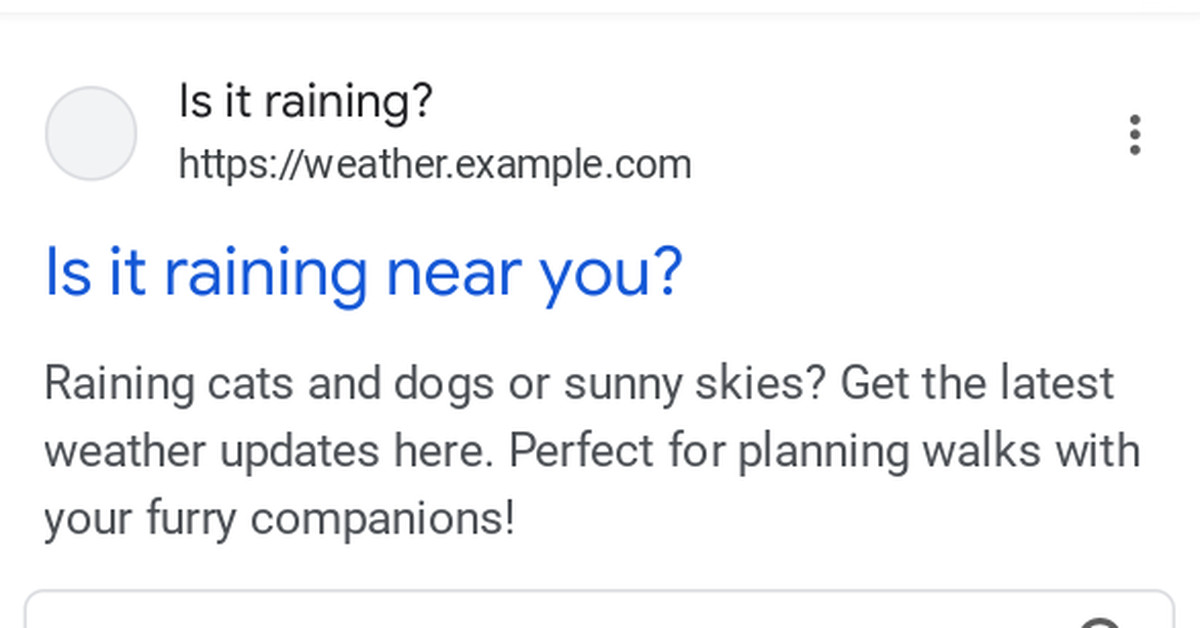
It’s been over ten years since we initially announced the sitelinks search box in Google Search, and over time, we’ve noticed that usage has dropped. With that, and to help simplify the search results, we’ll be removing this visual element starting on November 21, 2024.
If you have no idea what I’m talking about, it will probably make more sense if you see it:
See that little search box beneath the link for The New York Times? That’s what Google’s taking away. You can use the feature as a shortcut to search for something within The New York Times (or any other website that has it). After the November deadline, Google will no longer display the box in all languages and countries.
Had I not seen this announcement from Google, I probably wouldn’t have even noticed its disappearance because I barely ever used the thing. Overall, it’s a smaller tweak among the many changes to Google’s search engine as it leans into AI and shuffles the team in charge of Search.
-

 Science & Environment1 month ago
Science & Environment1 month agoHyperelastic gel is one of the stretchiest materials known to science
-

 Technology4 weeks ago
Technology4 weeks agoIs sharing your smartphone PIN part of a healthy relationship?
-

 Science & Environment1 month ago
Science & Environment1 month ago‘Running of the bulls’ festival crowds move like charged particles
-

 Science & Environment1 month ago
Science & Environment1 month agoHow to unsnarl a tangle of threads, according to physics
-

 Science & Environment1 month ago
Science & Environment1 month agoMaxwell’s demon charges quantum batteries inside of a quantum computer
-

 Technology1 month ago
Technology1 month agoWould-be reality TV contestants ‘not looking real’
-

 Science & Environment4 weeks ago
Science & Environment4 weeks agoX-rays reveal half-billion-year-old insect ancestor
-

 Science & Environment1 month ago
Science & Environment1 month agoSunlight-trapping device can generate temperatures over 1000°C
-

 Science & Environment1 month ago
Science & Environment1 month agoLiquid crystals could improve quantum communication devices
-

 Science & Environment1 month ago
Science & Environment1 month agoQuantum ‘supersolid’ matter stirred using magnets
-

 Womens Workouts4 weeks ago
Womens Workouts4 weeks ago3 Day Full Body Women’s Dumbbell Only Workout
-

 Technology3 weeks ago
Technology3 weeks agoUkraine is using AI to manage the removal of Russian landmines
-

 TV3 weeks ago
TV3 weeks agoসারাদেশে দিনব্যাপী বৃষ্টির পূর্বাভাস; সমুদ্রবন্দরে ৩ নম্বর সংকেত | Weather Today | Jamuna TV
-

 Science & Environment1 month ago
Science & Environment1 month agoWhy this is a golden age for life to thrive across the universe
-

 Science & Environment1 month ago
Science & Environment1 month agoLaser helps turn an electron into a coil of mass and charge
-

 Science & Environment1 month ago
Science & Environment1 month agoA new kind of experiment at the Large Hadron Collider could unravel quantum reality
-

 Science & Environment1 month ago
Science & Environment1 month agoQuantum forces used to automatically assemble tiny device
-

 Science & Environment1 month ago
Science & Environment1 month agoNerve fibres in the brain could generate quantum entanglement
-

 Science & Environment1 month ago
Science & Environment1 month agoHow to wrap your mind around the real multiverse
-

 Science & Environment1 month ago
Science & Environment1 month agoA slight curve helps rocks make the biggest splash
-
Business3 weeks ago
DoJ accuses Donald Trump of ‘private criminal effort’ to overturn 2020 election
-

 News3 weeks ago
News3 weeks agoMassive blasts in Beirut after renewed Israeli air strikes
-

 Business2 weeks ago
Business2 weeks agoWhen to tip and when not to tip
-

 News2 weeks ago
News2 weeks agoNavigating the News Void: Opportunities for Revitalization
-

 Science & Environment1 month ago
Science & Environment1 month agoITER: Is the world’s biggest fusion experiment dead after new delay to 2035?
-

 News1 month ago
News1 month ago▶️ Hamas in the West Bank: Rising Support and Deadly Attacks You Might Not Know About
-
News1 month ago
the pick of new debut fiction
-

 News4 weeks ago
News4 weeks agoOur millionaire neighbour blocks us from using public footpath & screams at us in street.. it’s like living in a WARZONE – WordupNews
-

 MMA3 weeks ago
MMA3 weeks agoJulianna Peña trashes Raquel Pennington’s behavior as champ
-

 Technology3 weeks ago
Technology3 weeks agoMicrophone made of atom-thick graphene could be used in smartphones
-

 Technology3 weeks ago
Technology3 weeks agoSamsung Passkeys will work with Samsung’s smart home devices
-

 Football3 weeks ago
Football3 weeks agoRangers & Celtic ready for first SWPL derby showdown
-

 Science & Environment1 month ago
Science & Environment1 month agoTime travel sci-fi novel is a rip-roaringly good thought experiment
-

 Science & Environment1 month ago
Science & Environment1 month agoNuclear fusion experiment overcomes two key operating hurdles
-

 News1 month ago
News1 month ago▶️ Media Bias: How They Spin Attack on Hezbollah and Ignore the Reality
-

 Technology4 weeks ago
Technology4 weeks agoWhy Machines Learn: A clever primer makes sense of what makes AI possible
-

 News2 weeks ago
News2 weeks ago▶ Hamas Spent $1B on Tunnels Instead of Investing in a Future for Gaza’s People
-

 MMA3 weeks ago
MMA3 weeks agoPereira vs. Rountree prediction: Champ chases legend status
-

 Sport3 weeks ago
Sport3 weeks agoBoxing: World champion Nick Ball set for Liverpool homecoming against Ronny Rios
-

 Science & Environment1 month ago
Science & Environment1 month agoPhysicists have worked out how to melt any material
-

 Sport3 weeks ago
Sport3 weeks agoWorld’s sexiest referee Claudia Romani shows off incredible figure in animal print bikini on South Beach
-

 Technology3 weeks ago
Technology3 weeks agoThis AI video generator can melt, crush, blow up, or turn anything into cake
-

 TV2 weeks ago
TV2 weeks agoLove Island star sparks feud rumours as one Islander is missing from glam girls’ night
-

 MMA2 weeks ago
MMA2 weeks ago‘Uncrowned queen’ Kayla Harrison tastes blood, wants UFC title run
-

 Sport2 weeks ago
Sport2 weeks agoWales fall to second loss of WXV against Italy
-

 Sport3 weeks ago
Sport3 weeks agoSturm Graz: How Austrians ended Red Bull’s title dominance
-

 Sport2 weeks ago
Sport2 weeks agoCoco Gauff stages superb comeback to reach China Open final
-

 News3 weeks ago
News3 weeks agoHeartbreaking end to search as body of influencer, 27, found after yacht party shipwreck on ‘Devil’s Throat’ coastline
-

 Technology3 weeks ago
Technology3 weeks agoTexas is suing TikTok for allegedly violating its new child privacy law
-

 News2 weeks ago
News2 weeks agoFamily plans to honor hurricane victim using logs from fallen tree that killed him
-

 News2 weeks ago
News2 weeks agoHeavy strikes shake Beirut as Israel expands Lebanon campaign
-

 Science & Environment1 month ago
Science & Environment1 month agoPhysicists are grappling with their own reproducibility crisis
-

 Technology1 month ago
Technology1 month agoMeta has a major opportunity to win the AI hardware race
-

 MMA3 weeks ago
MMA3 weeks agoDana White’s Contender Series 74 recap, analysis, winner grades
-

 TV3 weeks ago
TV3 weeks agoPhillip Schofield accidentally sets his camp on FIRE after using emergency radio to Channel 5 crew
-

 Technology3 weeks ago
Technology3 weeks agoMusk faces SEC questions over X takeover
-

 News3 weeks ago
News3 weeks agoGerman Car Company Declares Bankruptcy – 200 Employees Lose Their Jobs
-

 News3 weeks ago
News3 weeks ago‘Blacks for Trump’ and Pennsylvania progressives play for undecided voters
-

 Money2 weeks ago
Money2 weeks agoWetherspoons issues update on closures – see the full list of five still at risk and 26 gone for good
-

 MMA2 weeks ago
MMA2 weeks agoPereira vs. Rountree preview show live stream
-

 Sport2 weeks ago
Sport2 weeks agoMan City ask for Premier League season to be DELAYED as Pep Guardiola escalates fixture pile-up row
-
Business3 weeks ago
Bank of England warns of ‘future stress’ from hedge fund bets against US Treasuries
-

 Business3 weeks ago
Business3 weeks agoChancellor Rachel Reeves says she needs to raise £20bn. How might she do it?
-

 MMA3 weeks ago
MMA3 weeks agoAlex Pereira faces ‘trap game’ vs. Khalil Rountree
-
Business3 weeks ago
Sterling slides after Bailey says BoE could be ‘a bit more aggressive’ on rates
-

 TV3 weeks ago
TV3 weeks agoMaayavi (මායාවී) | Episode 23 | 02nd October 2024 | Sirasa TV
-
Business3 weeks ago
Eurosceptic Andrej Babiš eyes return to power in Czech Republic
-

 News1 month ago
News1 month agoYou’re a Hypocrite, And So Am I
-

 Sport1 month ago
Sport1 month agoJoshua vs Dubois: Chris Eubank Jr says ‘AJ’ could beat Tyson Fury and any other heavyweight in the world
-

 Science & Environment1 month ago
Science & Environment1 month agoRethinking space and time could let us do away with dark matter
-

 Science & Environment1 month ago
Science & Environment1 month agoA tale of two mysteries: ghostly neutrinos and the proton decay puzzle
-

 Technology3 weeks ago
Technology3 weeks agoArtificial flavours released by cooking aim to improve lab-grown meat
-

 Technology3 weeks ago
Technology3 weeks agoAmazon’s Ring just doubled the price of its alarm monitoring service for grandfathered customers
-

 Technology2 weeks ago
Technology2 weeks agoPopular financial newsletter claims Roblox enables child sexual abuse
-

 News2 weeks ago
News2 weeks agoHull KR 10-8 Warrington Wolves – Robins reach first Super League Grand Final
-

 MMA2 weeks ago
MMA2 weeks agoUFC 307 preview show: Will Alex Pereira’s wild ride continue, or does Khalil Rountree shock the world?
-

 Money2 weeks ago
Money2 weeks agoWhy thousands of pensioners WON’T see State Pension rise by full £460 next year
-

 Technology2 weeks ago
Technology2 weeks agoHow to disable Google Assistant on your Pixel Watch 3
-

 Technology2 weeks ago
Technology2 weeks agoThe best budget robot vacuums for 2024
-

 Technology2 weeks ago
Technology2 weeks agoA very underrated horror movie sequel is streaming on Max
-

 Technology2 weeks ago
Technology2 weeks agoIf you’ve ever considered smart glasses, this Amazon deal is for you
-

 Football3 weeks ago
Football3 weeks agoSimo Valakari: New St Johnstone boss says Scotland special in his heart
-

 Technology3 weeks ago
Technology3 weeks agoJ.B. Hunt and UP.Labs launch venture lab to build logistics startups
-

 News3 weeks ago
News3 weeks agoWoman who died of cancer ‘was misdiagnosed on phone call with GP’
-
Business3 weeks ago
CEOs turn to podcasts to control their message
-

 News3 weeks ago
News3 weeks agoHungry customer left gobsmacked as two blokes riding giant HORSES stroll into local chip shop
-

 Technology3 weeks ago
Technology3 weeks agoApple iPhone 16 Plus vs Samsung Galaxy S24+
-
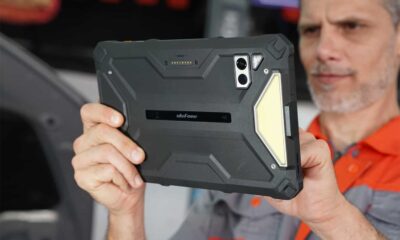
 Technology3 weeks ago
Technology3 weeks agoUlefone Armor Pad 4 Ultra is now available, at a discount
-

 News3 weeks ago
News3 weeks agoReach CEO Jim Mullen: If government advertises with us, we’ll employ more reporters
-
Politics3 weeks ago
Rosie Duffield’s savage departure raises difficult questions for Keir Starmer. He’d be foolish to ignore them | Gaby Hinsliff
-

 News2 weeks ago
News2 weeks agoBalancing India and China Is the Challenge for Sri Lanka’s Dissanayake
-

 Health & fitness1 month ago
Health & fitness1 month agoThe secret to a six pack – and how to keep your washboard abs in 2022
-

 Science & Environment1 month ago
Science & Environment1 month agoCaroline Ellison aims to duck prison sentence for role in FTX collapse
-
News1 month ago
The Project Censored Newsletter – May 2024
-

 Technology3 weeks ago
Technology3 weeks agoQuantum computers may work better when they ignore causality
-

 Technology3 weeks ago
Technology3 weeks agoUniversity examiners fail to spot ChatGPT answers in real-world test
-

 News1 month ago
News1 month agoNew investigation ordered into ‘doorstep murder’ of Alistair Wilson
-

 Football1 month ago
Football1 month agoMike Williamson: Carlisle United appoint MK Dons boss as head coach
-
Politics1 month ago
UK consumer confidence falls sharply amid fears of ‘painful’ budget | Economics
-

 MMA3 weeks ago
MMA3 weeks agoConor McGregor challenges ‘woeful’ Belal Muhammad, tells Ilia Topuria it’s ‘on sight’

You must be logged in to post a comment Login